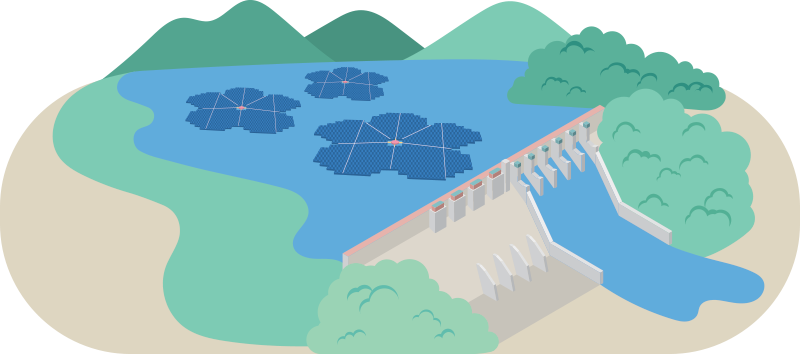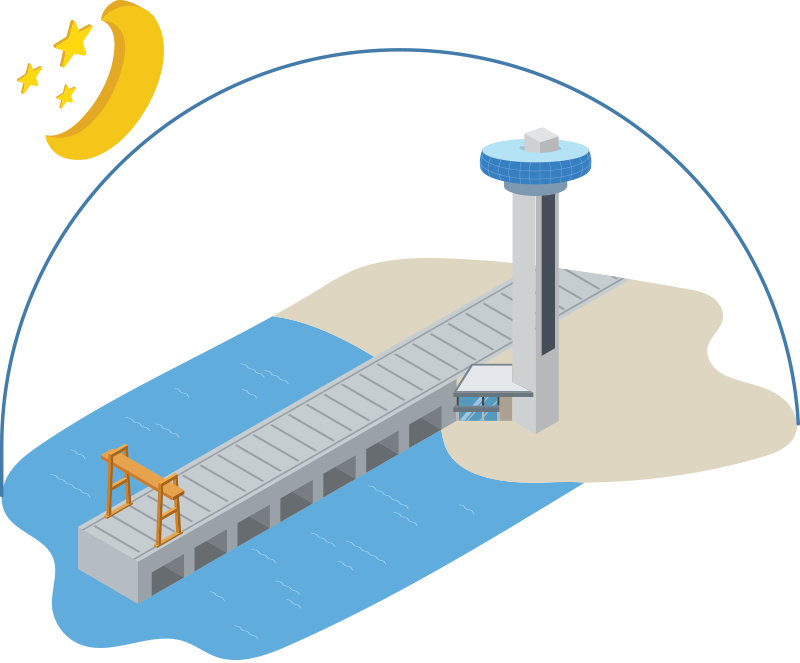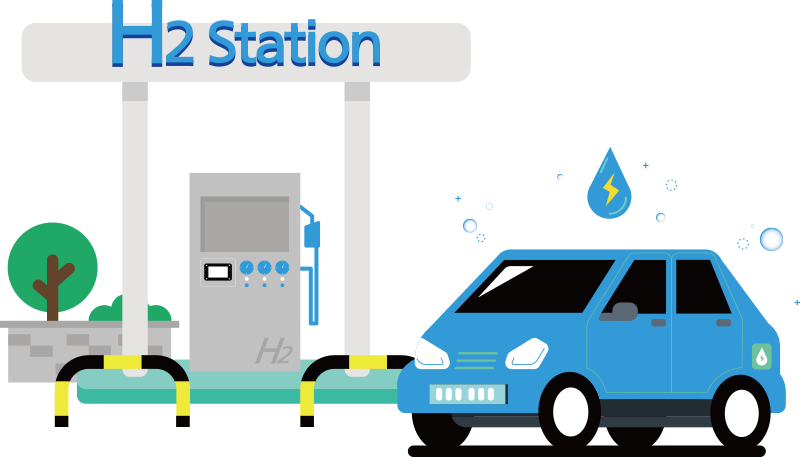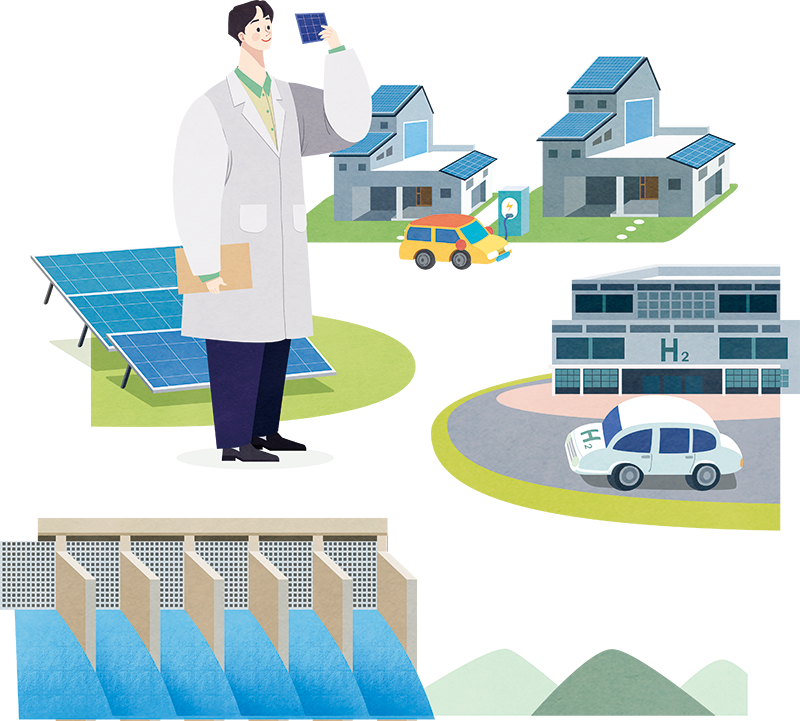-
 2022. December VOL. 657
2022. December VOL. 657
An empirical research project was implemented at Hapcheon Dam in 2011, and it became the first dam in Korea to commercialize floating photovoltaic power generation. It has the largest floating photovoltaic power generation capacity of 41.5MW in Korea. In particular, the floating photovoltaic modules installed on the water of the dam are shaped like apricot flowers instead of the commonly used square design as a regional symbol; profit from the power plant is shared with local residents, creating new values of the dam’s water surface.


K-water and Gangwon-do Province are working together to produce hydrothermal energy(165,000RT) from the raw water of Soyang River Dam, which will be used for heating and cooling. The construction of the cluster, which started in 2020, will be finished in 2027, and K-water will operate the facility for 30 years from 2028 to 2057.

Tidal power generation produces electricity by using the natural rise and fall of ocean tides that occur daily due to the force of gravity of the sun and the moon and the centrifugal force of Earth’s rotation. Together with the U.K. and France, the west coast of Korea is one of the places with large tidal range. In particular, the location of the tidal power plant at Sihwaho Lake is considered an ideal site for tidal power generation as the tidal range reaches 7.8m, the largest in Korea. The tidal power plant with annual capacity of 552GWh is the first in Korea and the largest in the world.


As a renewable energy, green hydrogen is environment-friendly hydrogen produced with the electrolysis of water. K-water will conduct empirical research on an ongoing basis to enhance Korea’s green hydrogen production technology and produce 34,000 tons of green hydrogen per year by 2050; thus contributing to the national hydrogen economy.

The first project in Korea to build a green hydrogen production facility using small hydro power in Korea is implemented jointly by the Ministry of Environment, K-water, Seongnam-si, Hyundai Motor, and SK E&S to create a green hydrogen life cycle model including production, distribution, and utilization. Upon completion of construction early next year, the project consortium will embark on empirical and commercialization research.
